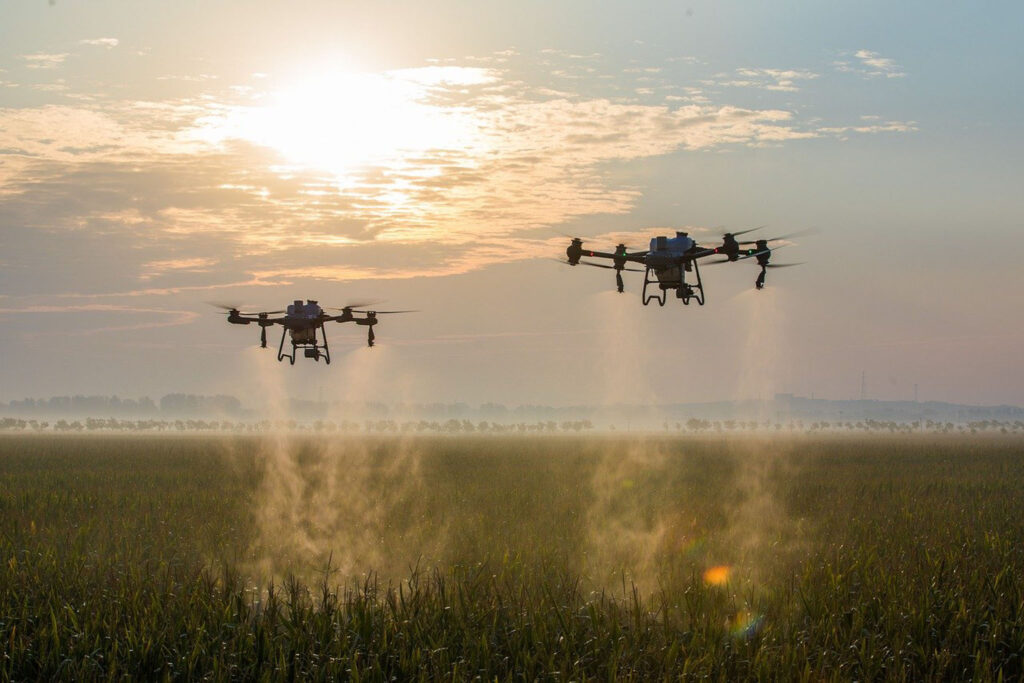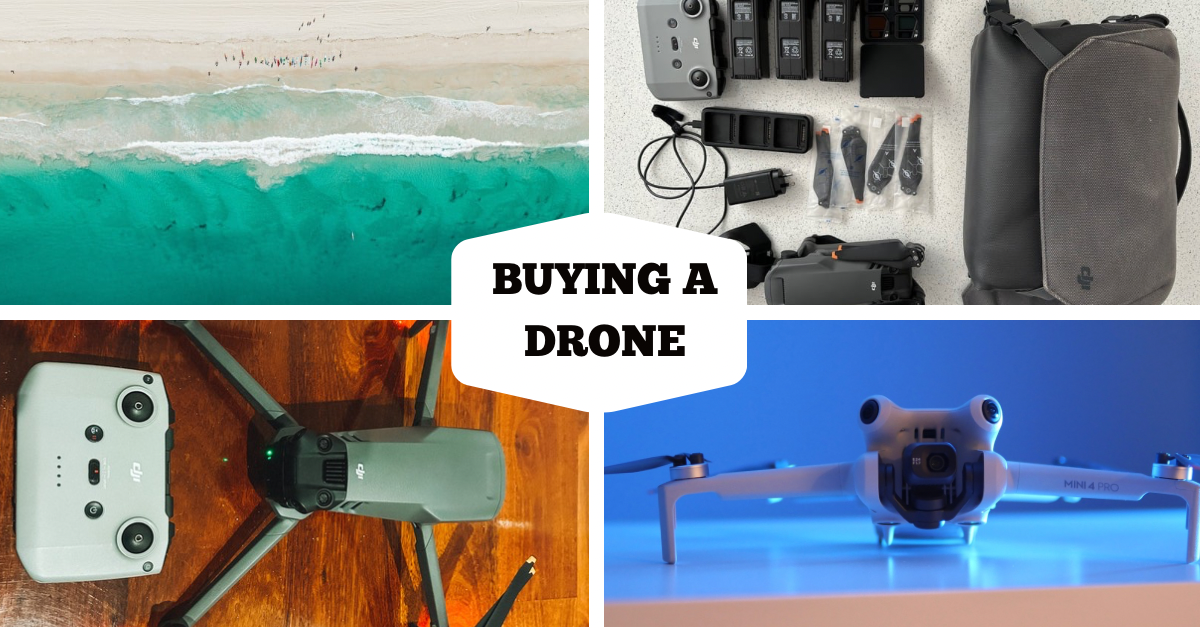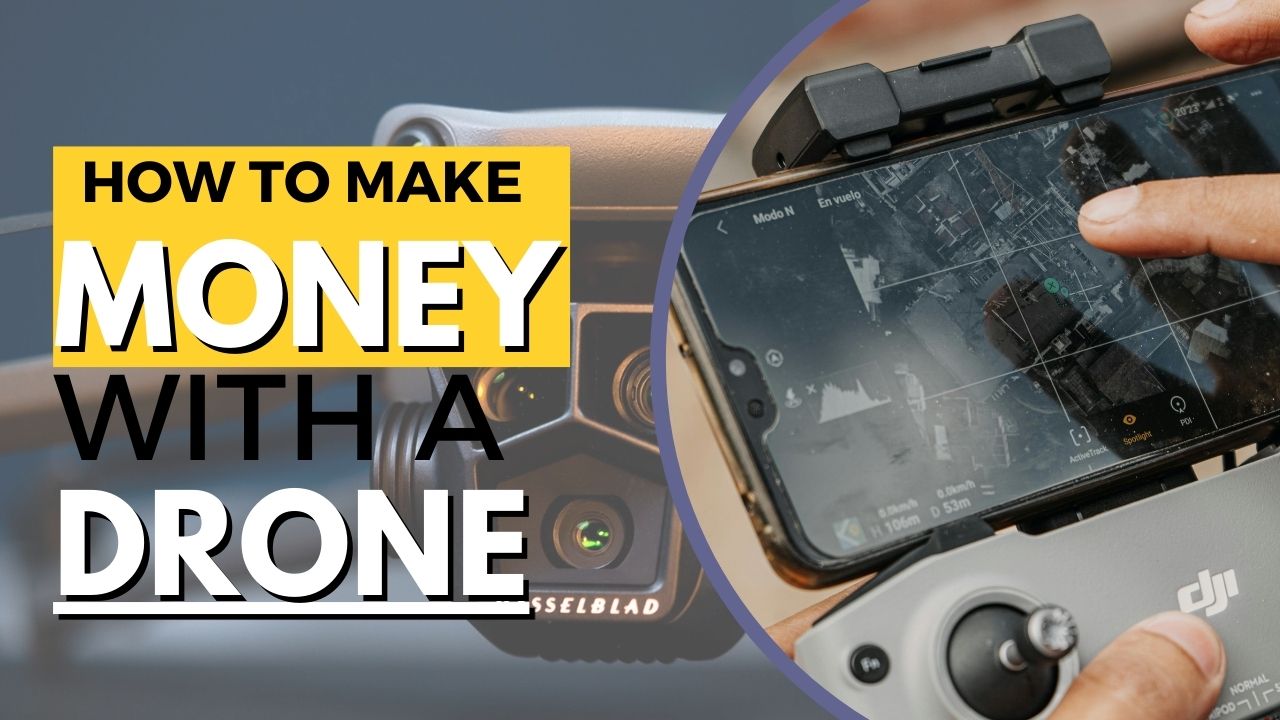Drones in agriculture have been a game-changer in the farming industry, and the year 2023 witnessed even more significant advancements in this technology.
These unmanned aircraft, commonly known as drones, are revolutionizing the way farmers manage their crops, monitor livestock, and make crucial decisions for their operations.
With the use of sensors, cameras, and advanced technology, drones provide real-time data for precision farming, resulting in increased crop yield, reduced costs, and improved farm management.
Understanding the Role of Drones in Modern Agriculture
These agricultural drones, also known as UAVs (Unmanned Aerial Vehicles), are equipped with sensors and cameras for data collection and analysis.
By capturing high-quality images and providing useful information, drones enable farmers to monitor and manage large areas of land effectively.
The global agricultural drone technology market is forecast to hit a staggering $8.4 billion AUD in 2028, up from $1.9 billion AUD in 2020, highlighting the industry’s rapid growth and the increasing adoption of drone technology in farming operations.
One of the key benefits is the ability to improve crop quality and reduce the use of pesticides and fertilisers. By precisely targeting crop disease and pest control, drones help minimise the use of harmful chemicals, resulting in healthier and more sustainable farming practices.
The Mechanism of Agricultural Drones in Crop Management
Drones in agriculture play a significant role in the management of crops, and their mechanism offers several benefits for farmers and growers. Let’s delve into ways drones contribute to soil analysis, irrigation, and crop monitoring for the betterment of farming operations.
How Drones Contribute to Soil Analysis and Irrigation
Agricultural drones provide essential soil moisture and nutrient information for soil analysis and management. By collecting and analyzing soil data, drones enable precision monitoring and management of irrigation systems, optimizing water usage and reducing water waste in farming operations.
Furthermore, they assist in the identification of soil erosion and runoff issues, enabling farmers to address these concerns promptly.
With the use of drone technology, soil mapping and fertility management become more accurate and efficient, leading to better crop quality and improved farm profitability.
How Drones are Transforming the Landscaping of Farming?
Drones in the farming industry are transforming the way agricultural land is managed and utilized. Their use in mapping, surveying, and designing farm infrastructure and water management systems has made farming operations more efficient and productive.
Agricultural drones, with their aerial perspective, assist in the planning and design of farm infrastructure, such as irrigation systems and crop rotation strategies. They also aid in the assessment of field boundaries and the management of farm resources, ensuring optimal utilization of crop and livestock areas.
With the help of drones in the agriculture industry, farmers can achieve improved farm productivity and profitability through efficient land management and resource allocation.

The Economic Impact of Drones in Agriculture
Let’s explore the cost savings and environmental benefits drones offer, resulting in improved profitability and sustainability for agricultural operations.
Cost Savings from Better Images and Data
Agricultural drones, with their high-quality images and data, provide farmers with valuable information for crop management, reducing the need for manual labour and inspections.
By identifying crop issues and diseases early on, drones help save costs on pesticides, fertilizers, and crop loss, thereby increasing profitability for growers.
The use of drones in the agriculture industry also enables precision farming, reducing production costs and optimizing farm operations. With the information obtained from drones, growers can make informed decisions about crop yield and quality, leading to higher profitability and improved farm management.
How Drones Help Reduce Environmental Impact?
Precision agriculture, made possible by drones, minimizes the use of pesticides and fertilizers, thereby minimizing agricultural runoff and preserving soil and water quality.
Furthermore, the use of drones in agriculture industry optimizes crop yield and reduces agricultural waste, promoting sustainable farming practices.
By minimizing the carbon footprint of farming operations and facilitating eco-friendly pest control and soil moisture management, drones play a crucial role in ensuring the long-term viability of agriculture.
Advancements in Drone Technology for Agriculture
Drones in the farming sector now offer enhanced flight control, longer battery life, and improved data analysis capabilities, providing growers with more accurate and useful information for farm management.
Moreover, the industry is expanding to include new applications, such as crop spraying and livestock monitoring, further revolutionizing the agricultural industry and offering new ways to address challenges and maximize farm profitability.
Drones Used in Farming
With the rapid advancement in drone technology, there are several drones available in the market that cater specifically to the agricultural industry. Let’s take a closer look at the top five drones for agriculture and their unique features and capabilities.
DJI Mavic 3 Multispectral
The DJI Mavic 3 Multispectral is arguably the best drone for agriculture, combining advanced technology with practical applications to offer one of the best drone solutions for farmers.
The drone is equipped with a 20MP RGB camera and four 5MP multispectral cameras, setting the standard for high-precision aerial surveying, crop growth monitoring, and natural resource surveys.
The 5MP multispectral camera’s capabilities, including near-infrared (NIR) and red edge (RE), empower users with detailed insights into crop health and growth patterns. This advanced imaging system firmly establishes the Mavic 3 Multispectral as one of the best drones with a multispectral camera on the market.
Adding to its impressive capabilities, the Mavic 3 Multispectral includes a built-in sunlight sensor. This component captures solar irradiance, a key factor in ensuring accurate NDVI (Normalized Difference Vegetation Index) results and maintaining data consistency over time.

Where To Buy?
https://www.dji.com/au/where-to-buy/enterprise-dealers
DJI Mavic 3 Pro
The Hasselblad Main Camera on the Mavic 3 Pro drone boasts a 4/3 CMOS sensor, with a 24mm format equivalent, f/2.8-f/11, and a resolution of 20 MP.
This drones camera also supports shooting RAW photos with a dynamic range of up to 12.8 stops. Additionally, the Medium Tele Camera on the Mavic 3 Pro provides further versatility with its 1/1.3-inch CMOS sensor, which equates to a 70mm equivalent, 3x Optical Zoom, f/2.8, and a resolution of 48 MP; while the 1/2-inch CMOS Tele Camera offers an impressive zoom capability of up to 166mm equivalent, 7x Optical Zoom, 28x Hybrid Zoom, f/3.4 and a resolution of 12 MP.
One of the most significant features of the Mavic 3 Pro is its Omnidirectional Obstacle Sensing and APAS (Advanced Pilot Assistance Systems) 5.0 technology that ensures safe flying while giving you peace of mind. This drone has eight vision sensors working in tandem with a vision computing engine to sense obstacles in any direction.
Another advantage of this drone is its DJI O3+ transmission system – presenting stable signals and providing you with coherent camera views from up to a distance of about15 km away. The Mavic Pro’s long-range capability coupled with its high-quality camera make it an excellent choice for professional photography or videography needs.

Where To Buy?
DJI Agras – Spraying drone
The AGRAS T40 is fitted with the innovative Coaxial Twin Rotor design, which allows it to transport a spray load of 40 kg and a spread load of 50 kg (70 L)[1]. The drone comes equipped with a Dual Atomised Spraying System, DJI Terra, Active Phased array Radar, and Binocular Vision.
It is capable of performing various tasks such as surveying, mapping, spraying, and spreading, thereby ensuring utmost accuracy in your agricultural operations.

Where To Buy?
https://www.dji.com/au/where-to-buy/agriculture-dealers
DJI Matrice 350 RTK
With a maximum transmission range of 12.4 miles and a flight time of up to 55 minutes, it offers exceptional performance capabilities. The drone is equipped with six directional sensing and positioning systems that ensure optimal stability and safety during flight.
It also includes the DJI RC Plus remote control and can withstand harsh environments thanks to its IP55 water and dust protection rating. With an operating temperature range of -4°F to 122°F, it can perform in various conditions.
Moreover, the upgraded OcuSync 3 Enterprise Transmission system provides high-quality video transmission even in low-light conditions. The new dual battery system allows for hot-swapping batteries, which ensures uninterrupted flights for longer periods.
Additionally, the night-vision FPV camera enables pilots to fly in low-light conditions safely. Lastly, the DJI Matrice 350 RTK is fully backwards compatible with DJI’s enterprise payloads, ensuring seamless integration with existing equipment.

Where To Buy?
https://www.dji.com/au/where-to-buy/agriculture-dealers
To Wrap It Up
In conclusion, drones are revolutionizing the agriculture industry by providing farmers with valuable insights and efficient solutions for crop management. From soil analysis and irrigation to crop monitoring and health assessment, drones play a crucial role in optimizing farming practices and maximizing crop yield.
Not only do they result in cost savings through better images and data, but they also contribute to reducing the environmental impact of traditional farming methods.
However, the implementation of drone technology in agriculture does come with its own set of challenges, including regulatory and privacy issues, as well as technological and operational hurdles. Despite these challenges, the advancements in drone technology continue to drive the transformation of agriculture, making it more sustainable and productive.
So, get ready to witness the drone revolution and embrace the future of farming!




